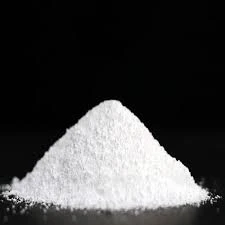Understanding Well Water Treatment Chemicals Ensuring Safe Drinking Water
Well water is a vital source of hydration for millions of households, particularly in rural and suburban areas. However, it often contains various contaminants that can pose health risks. To ensure that well water is safe for consumption, it is crucial to utilize appropriate well water treatment chemicals. This article explores the types of chemicals used in treating well water, their functions, and the implications for health and safety.
Common Contaminants in Well Water
Before diving into treatment chemicals, it is essential to understand the common contaminants found in well water. These include bacteria, nitrates, heavy metals (such as lead and arsenic), pesticides, and minerals like iron and manganese. Each of these contaminants can lead to adverse health effects, making the treatment of well water a priority for homeowners and communities.
Types of Treatment Chemicals
1. Chlorination Compounds One of the most common methods for disinfecting well water is through chlorination. Chemicals such as sodium hypochlorite or calcium hypochlorite are often used to kill bacteria, viruses, and parasites. Proper chlorination not only reduces the risk of waterborne diseases but also helps to eliminate unpleasant odors and tastes associated with organic material.
2. Water Softening Agents Hard water, which contains high levels of calcium and magnesium, is a common issue in many areas. Water softeners typically use sodium chloride (table salt) or potassium chloride to replace the hardness-causing minerals, effectively preventing scale buildup in pipes and appliances while improving soap efficiency.
3. Oxidizing Agents For issues like iron and manganese contamination, oxidizing agents such as potassium permanganate are employed. These chemicals react with the metals, transforming them into solid particles that can be filtered out, thus improving water clarity and taste.
4. pH Adjusters The acidity or alkalinity of water can affect not only its taste but also the solubility of various metals. Chemicals such as sodium carbonate or sulfuric acid can be used to adjust pH levels, ensuring that the water remains within the recommended range for safe consumption.
well water treatment chemicals

5. Filtration Aids In some cases, coagulants such as alum (aluminum sulfate) are added to water to help remove particulates. These chemicals bind to impurities, forming larger particles that can be more easily filtered out, enhancing water clarity and quality.
6. Nitrate Reduction Agents Nitrates, often from agricultural runoff, pose significant health risks, particularly to infants. Specialized treatment systems, such as anionic resins or biological denitrification methods, can be employed to reduce nitrate levels effectively.
The Importance of Professional Testing
While treatment chemicals can significantly improve water quality, it is vital to understand that incorrect usage or application of these chemicals can lead to further issues. Regular testing of well water is essential to identify specific contaminants present and to determine the appropriate treatment method. Homeowners should work with certified professionals to conduct comprehensive tests that include bacteriological, chemical, and physical assessments.
Environmental Considerations
When using well water treatment chemicals, it is crucial to consider their environmental impact. Improper handling and disposal of chemicals can lead to contamination of surrounding soil and groundwater, creating a cycle of pollution. Homeowners should follow local regulations and guidelines for chemical use and disposal to minimize environmental risks.
Conclusion
Treating well water effectively is a critical process that ensures safe drinking water for families relying on this resource. By understanding the various well water treatment chemicals and their roles in addressing specific contaminants, homeowners can take informed steps to maintain their water quality. Regular testing and professional guidance are essential to achieving optimal water safety while safeguarding both health and the environment. Ultimately, informed decision-making surrounding well water treatment can lead to healthier communities and enhanced quality of life.

